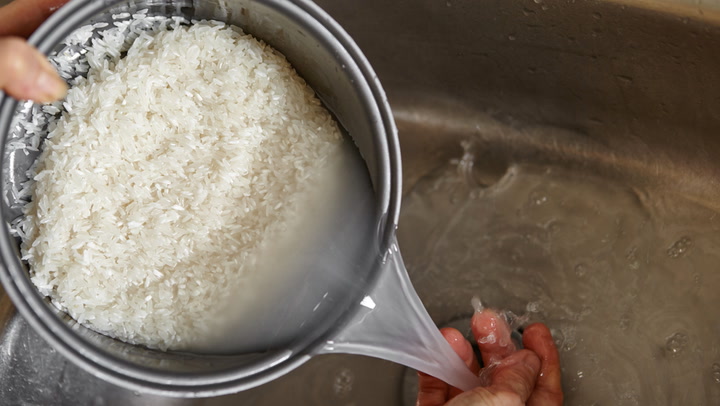Food prep involves washing fruits and veggies, skinning and trimming meats, and generally making sure that what you’re about to cook is free from harmful bacteria or sinewy pieces. But what about one of the ultimate pantry staples: rice? It is not only a healthy food prep step, but also crucial for achieving consistently fluffy rice.
Do we really have to?
In short: Yes. It might be a common debate in your household (like it is in mine) over whether washing rice follows tradition or adds an extra, potentially unnecessary step to dinner. Washing rice is a crucial food prep practice because:
- It needs to be cleaned: Rice has travelled a lengthy journey, from the fields to processing factories, on the road and in your supermarket. Rinsing rice removes dirt, dust, debris, chemicals, and bugs, all of which are not preferred in a final dish.
- It removes excess starch: To make fluffy rice consistently, you will have to rinse off excess starch that coats each grain before cooking. If left unrinsed, the excess starch can cause gummy or overly sticky rice (this is not the same as sticky rice you find in Japan).
- It improves the texture: Rinsed rice is free from impurities and excess starch, resulting in a light and fluffy texture.
What types of rice should be rinsed?
A good rule of thumb is to rinse all rice types, regardless of their size or origin. But here’s a more specific list for common varieties:
- Long-grain rice: Like basmati and jasmine, always rinse thoroughly
- Short-grain rice: Multiple rinses are required, especially with sushi rice (very starchy)
- Brown rice: Only rinse to remove dust and debris; it doesn’t have as much starch
- Pre-washed rice: This is usually fortified or enriched, and rinsing might wash away nutrients. Check the packaging for further instructions
How to rinse rice
- Add rice to a bowl, cover with cold water.
- Use your hand to swirl the rice in the bowl, making sure each grain is soaked.
- Carefully drain the water without losing any rice grains.
- You may repeat 2 to 3 times or until the water runs clear.
Tip: Use a sieve or fine-mesh strainer for a quicker rinse option.
Skipping the rinse might save you a minute, but you might have a surprise bug or bits of debris that throw off your finished dish. Taking the time to wash your rice instantly sets you up for success. From fluffier grains to fresher flavour (without the hidden extras), this small habit produces major results. Learn your rice, give it a quick rinse, and you’ll be rewarded with perfect bowls every time.

